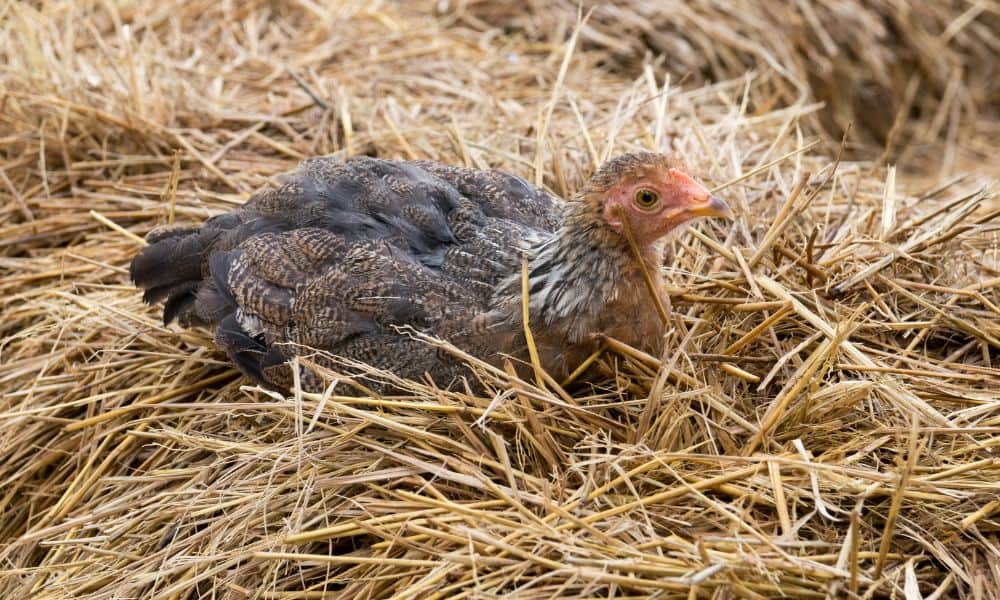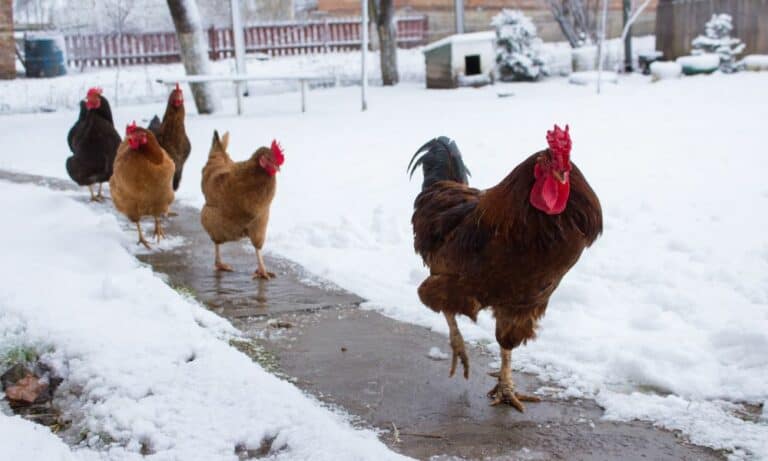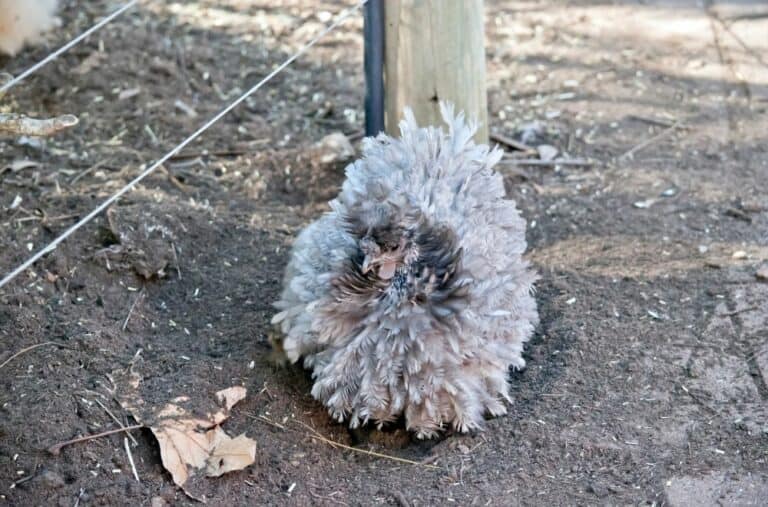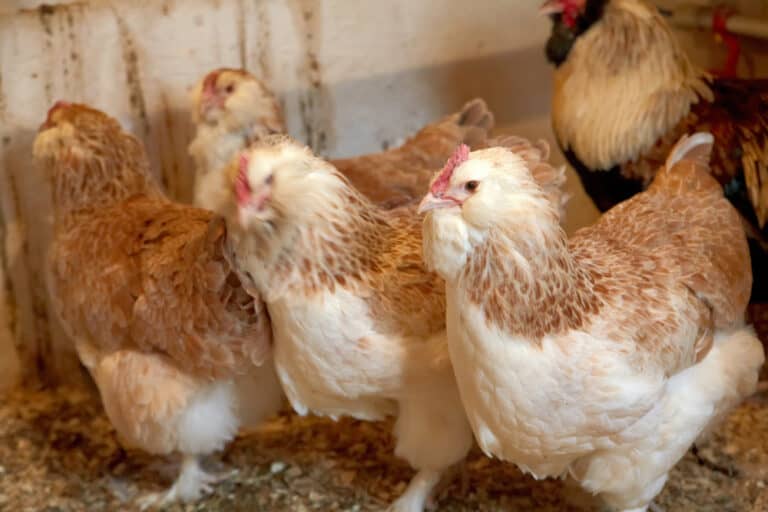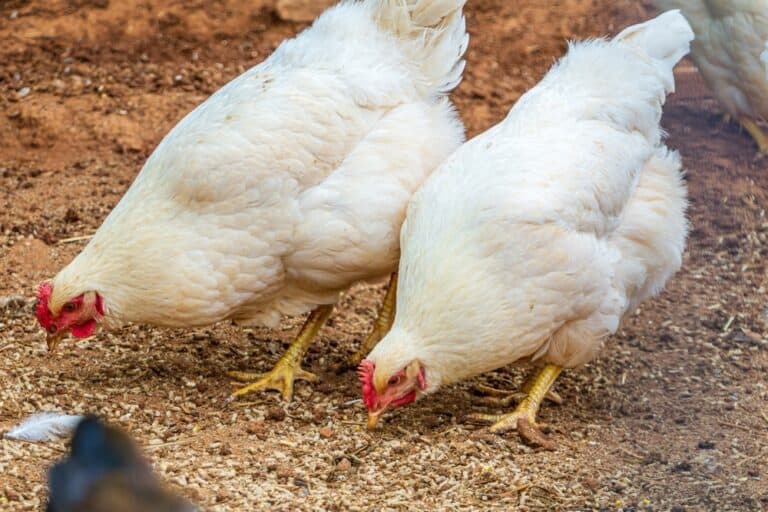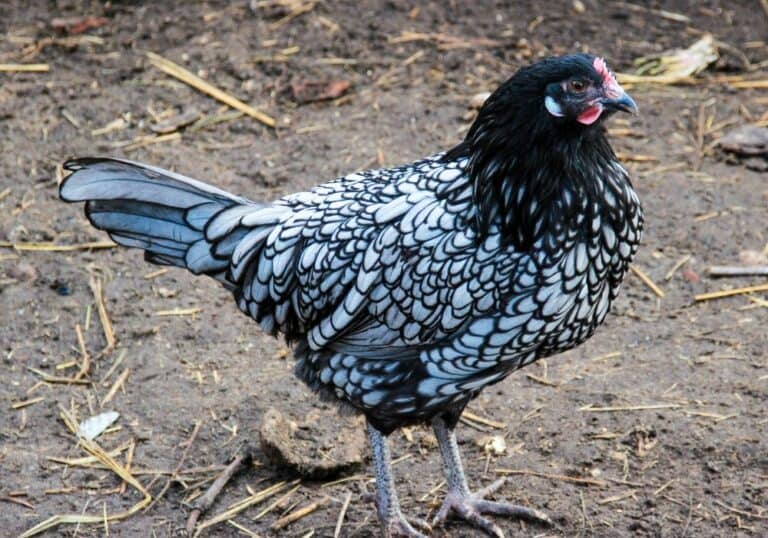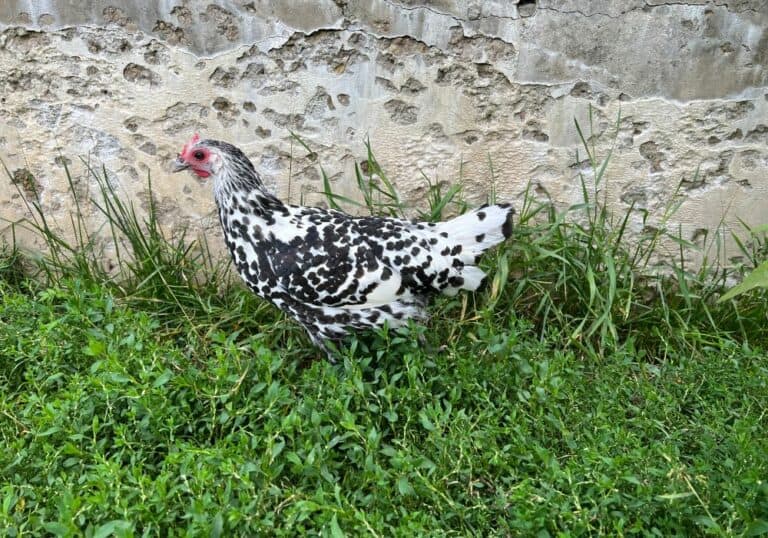When selecting a breed of chicken to raise, broodiness is an important characteristic to consider.
If you want to maximize your egg yield, you’ll want to choose hens that don’t go broody – while for hatching chicks, adding broody hens to your flock can be a great way to do it.
Broodiness in chickens can vary greatly – so in this post, we discuss broody chicken breeds to help you understand which types are best suited to your situation.
What is a broody chicken?
Before we look at the broodiest chicken breeds, let’s take a step back and ask a more basic question – what is a broody hen?
A broody hen is one that is driven by her instincts to sit on her eggs to incubate them, and when that happens, she will stop laying eggs or socializing with other chickens and instead will stay in her nest box and sit on her eggs – even if they are unfertilized.
When this happens, you may notice that her feathers become puffed up, and she might bury her head under her wings as she tries to keep the eggs warm enough to hatch.
Hens in this state can also become aggressive, sometimes fighting to protect their eggs, and in laying hens, this can be a pain when you’re trying to collect the eggs for the kitchen.
On the other hand, if you want to hatch new chicks, this kind of behavior can be desirable because the mother hen will sit on the eggs until they hatch, meaning you don’t need to worry about using an incubator.
What makes hens go broody?
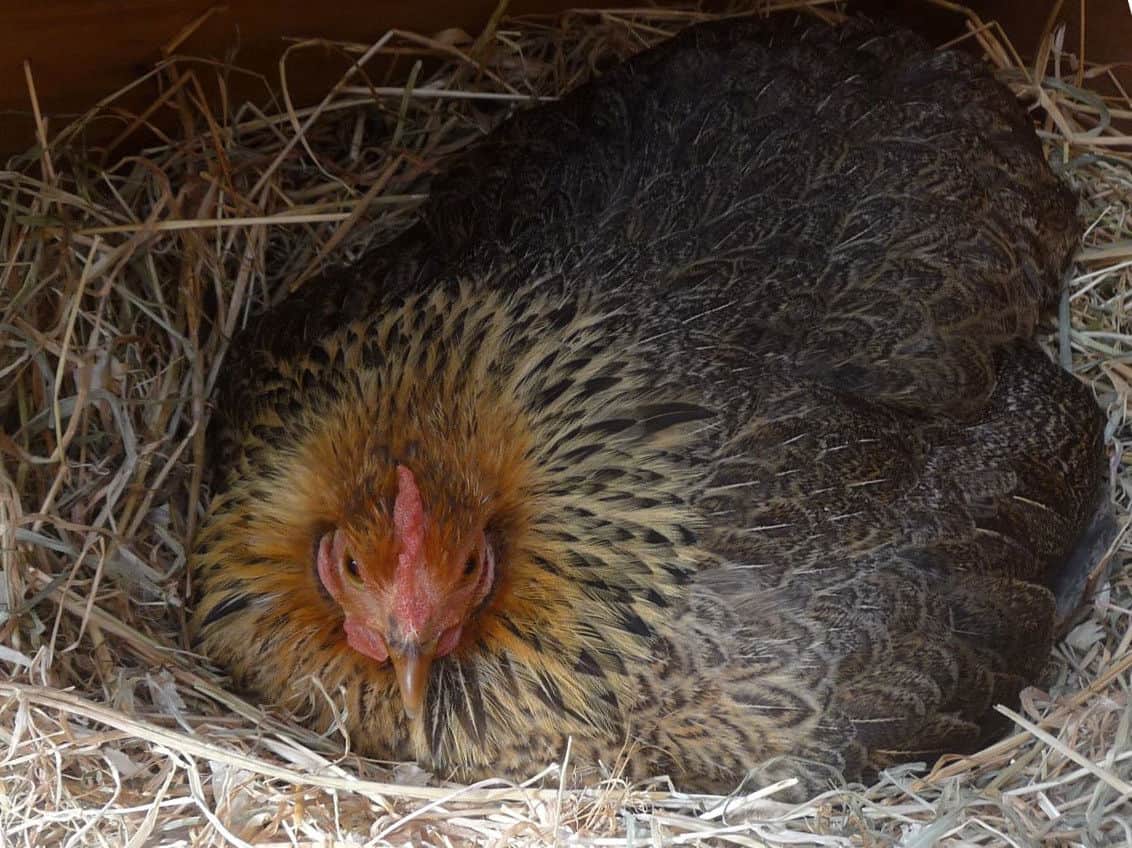
Although it’s not entirely understood what makes a hen go broody, it’s thought to be a combination of factors that includes temperature, amount of light, age of the hen, genetics, hormones and the individual hen herself.
Some breeds are known to go broody easily while others almost never do.
In particular, heirloom breeds have a broody tendency since their natural instincts are closer to those of wild chickens and haven’t been bred out.
So which breeds of chicken are most likely to go broody? Let’s have a look at that now.
The broodiest breeds of chicken
1. Brahmas
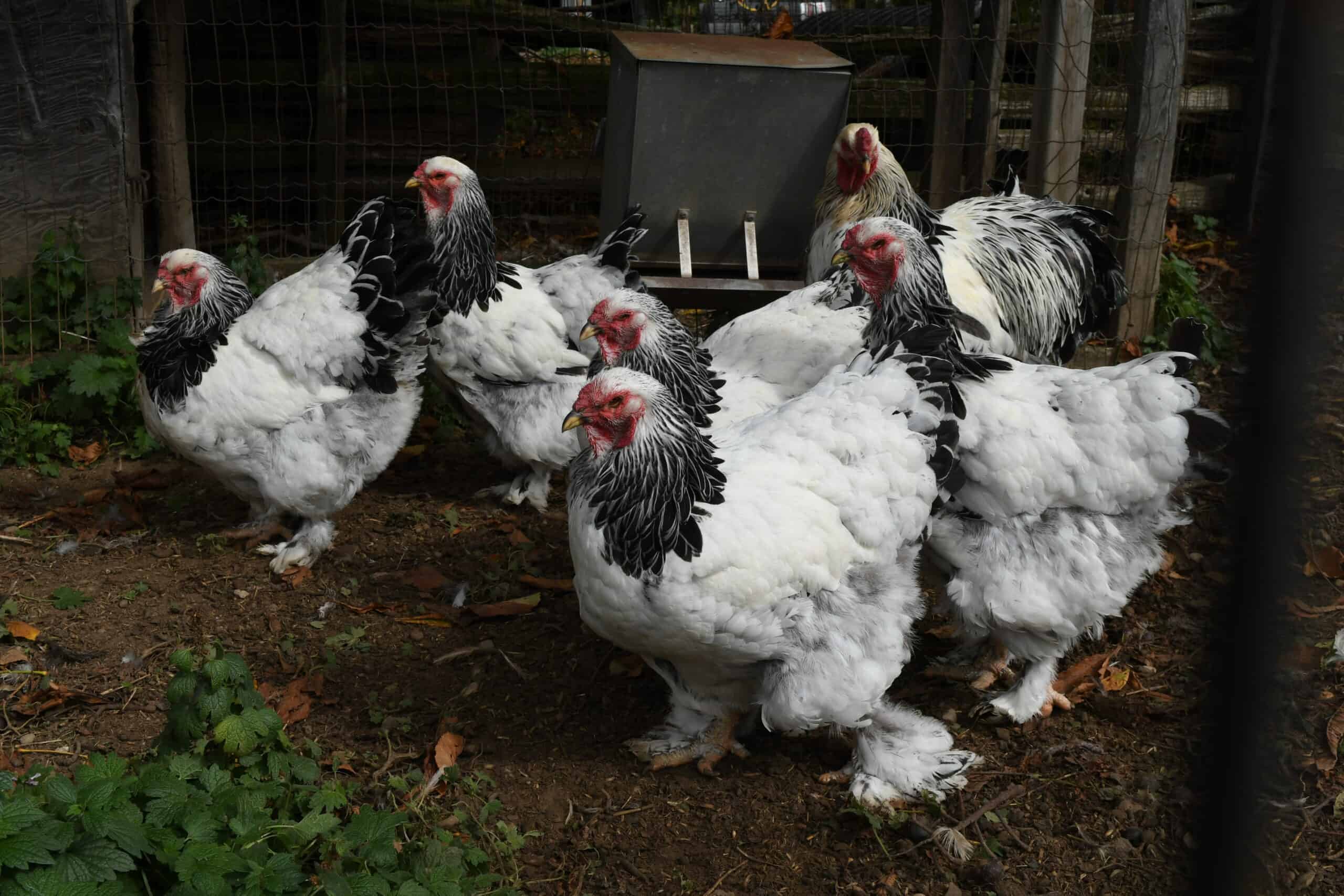
Brahmas were originally brought to the US in the 1840s from China, which is why they were originally known as “Shanghais” – although their lineage probably has some Indian blood in it too.
They are large chickens with heavy feathering, including on the legs and feet, and they are also known to have a friendly and docile disposition.
From around 1850 to the 1930s, they were the main meat bird kept in the United States.
However, their propensity to lay a large number of eggs means they make an excellent dual-purpose chicken too.
Furthermore, they are known to go broody, so if you are looking for hens that will help you maintain your flock, brahmas could be a great option.
In the past, brahmas fell out of favor, which pushed up the price. Due to their many desirable qualities, they are now becoming popular again with homesteaders and backyard chicken keepers, so nowadays, they aren’t as expensive as they once were.
2. Silkies
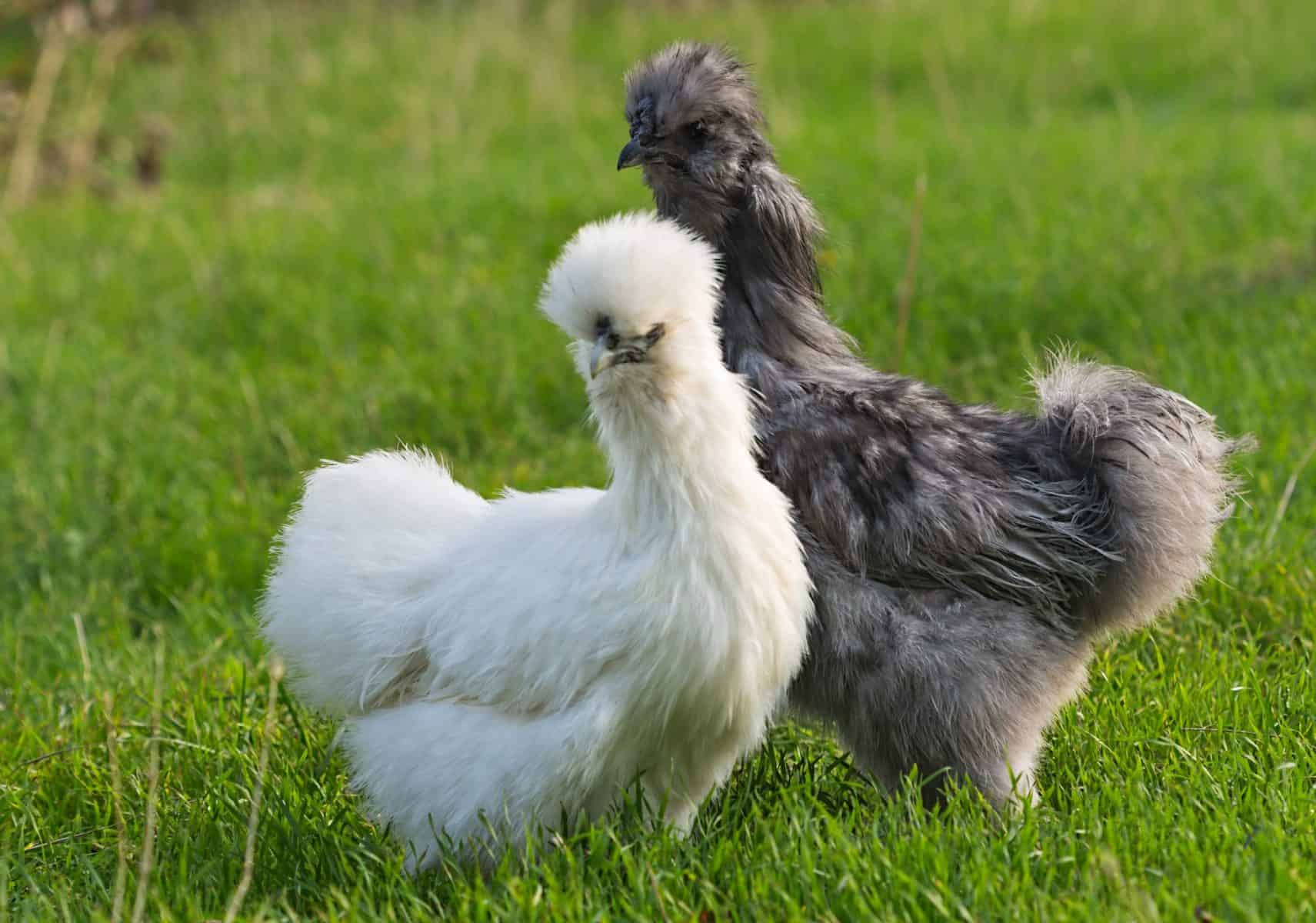
Silkies are among the most unique and distinctive chickens you’ll ever come across due to their surprising plumage – it more resembles mammalian fur than the feathers of a bird.
This breed also originated in China and may even have been the type of chicken written about by Marco Polo at the end of the 13th century. Later, when they began to arrive in Europe, some people believed them to be the result of a cross between a chicken and a rabbit!
Due to their unusual plumage, silkies need extra care since they are not cold-hardy and also don’t do well in wet or muddy conditions.
However, due to their friendly nature, they make excellent pets or companion animals. They are also often kept for show, but since they are among the very broodiest breeds of chicken, this trait is commonly exploited for hatching chicks.
Indeed, so strong is their urge to sit on eggs when in their broody state that they are even used to incubate the eggs of other poultry species such as ducks.
3. Orpington
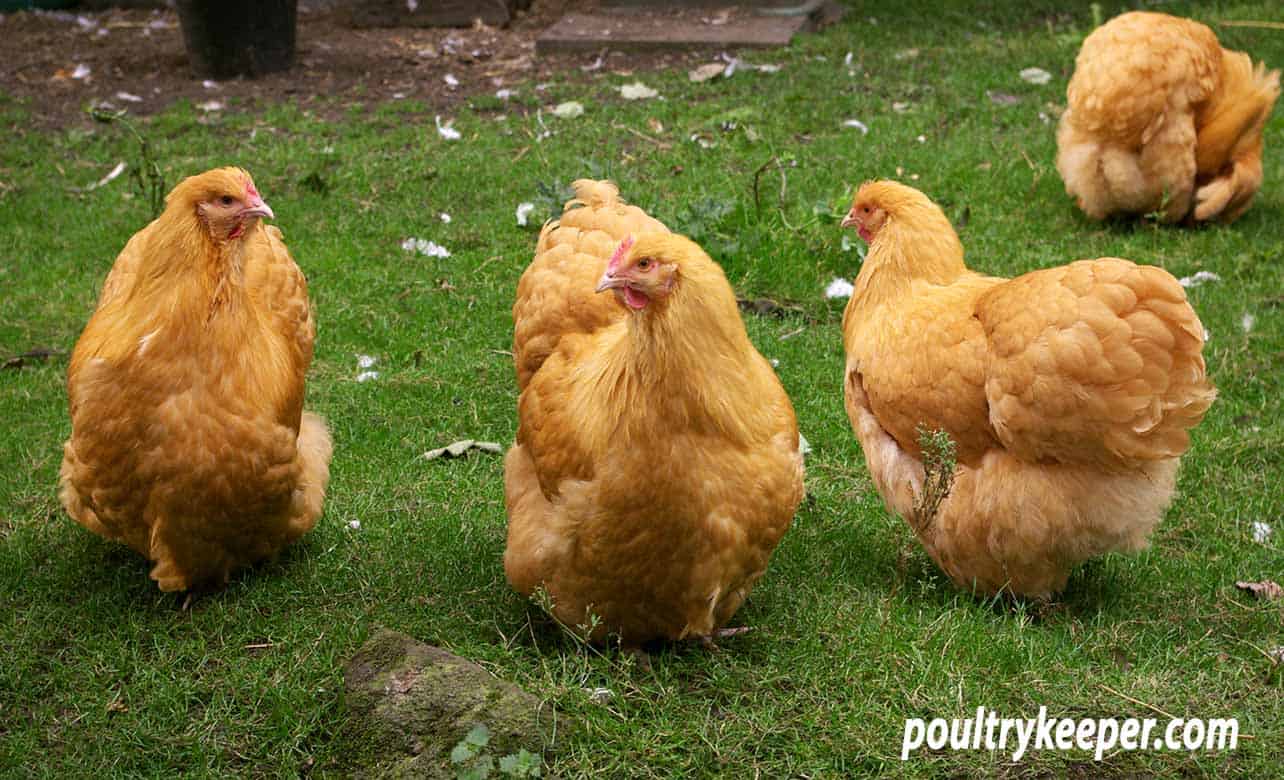
Orpingtons are a British breed of chicken that was created in Orpington, a town in the southeastern English county of Kent.
They were originally bred as a dual-purpose breed, but they are now most commonly used for showing.
They are large, fluffy and attractive birds that are cold-hardy and have a docile temperament, all of which makes them an excellent choice for beginners or first-time chicken keepers – either as utility chickens or simply as pets.
They are large enough to make a good table bird, but their egg-laying productivity means you can also expect a respectable annual return of eggs from this breed.
In addition, the hens are known to go broody and make excellent and devoted mothers, taking care of their hatched chicks until they are big enough to fend for themselves.
For this reason, Orpingtons are a popular choice among those raising sustainable, self-repopulating flocks.
4. Chantecler
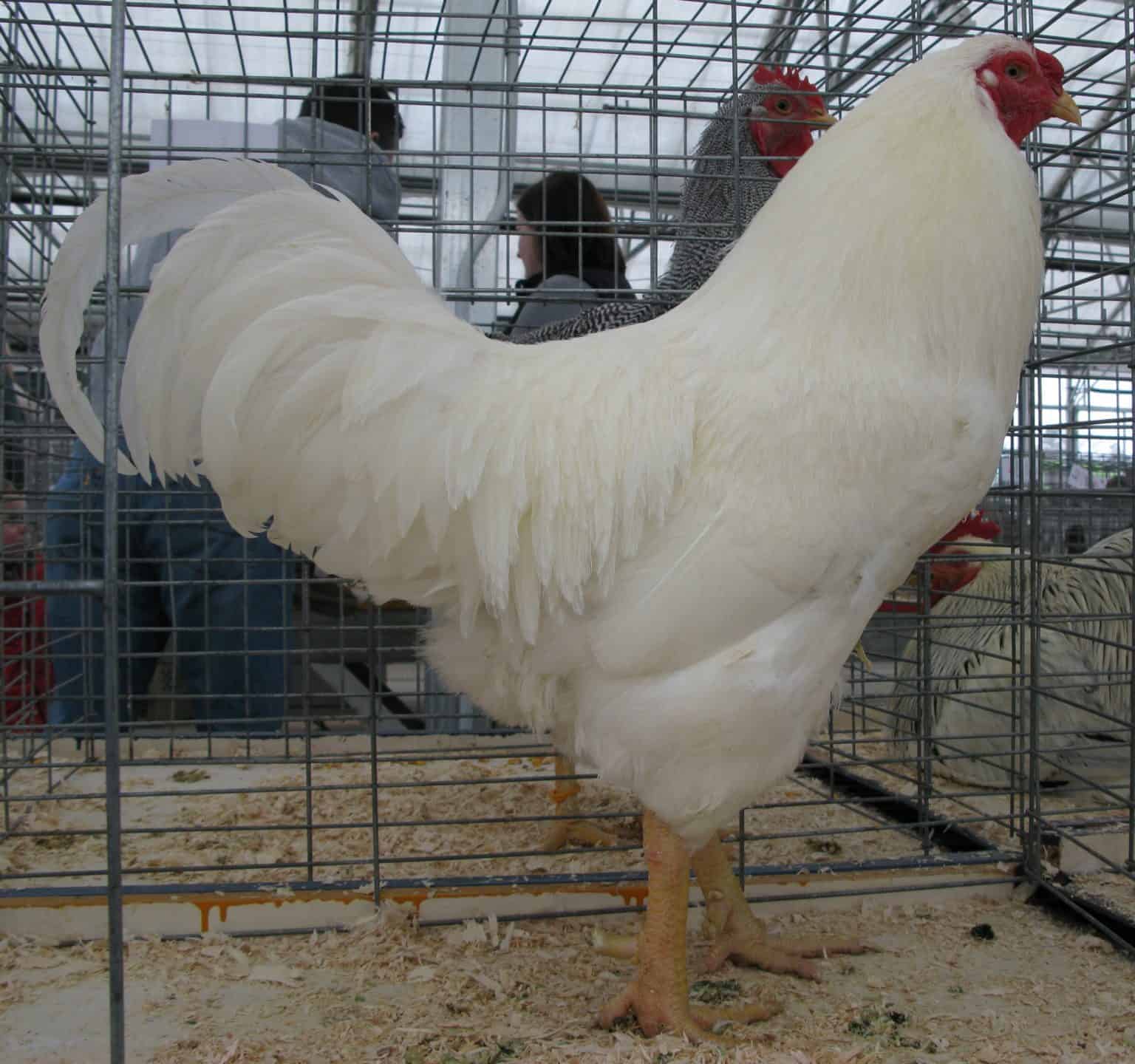
Created in Canada in the early twentieth century, the chantecler is among the most cold-resistant chicken breeds in the world.
It was created specifically as a dual-purpose breed, and as such, it is a large chicken with plenty of meat that also lays a respectable number of eggs each year.
They are usually gentle, docile, friendly and independent, so they aren’t particularly difficult to care for. However, they tend to do much better when free ranging than when kept in confinement.
They are known to go broody, so they are also a common choice of breed for those who are looking for the type of hen that will help hatch chicks and look after them after they are born.
5. Cochins
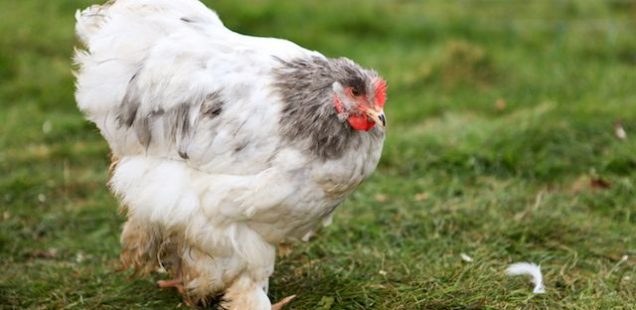
Like brahma chickens, cochins are descended from birds brought to the US from China in the 1840s and 50s, and like brahmas, they were originally referred to as “Shanghais”, which caused some confusion.
Like brahmas, they also have feathered legs and feet, but rather than being bred for their meat – which has an unusual color and texture – or their egg-laying prowess, they have become primarily show birds.
However, they are known to go broody and can be used to hatch the eggs of other less broody breeds – as well as even the eggs of other species such as ducks or turkeys. They also make good mothers when the chicks emerge.
At the same time, they have friendly, docile personalities, so cochins can be kept merely as pets, even around young children.
6. Icelandic chickens
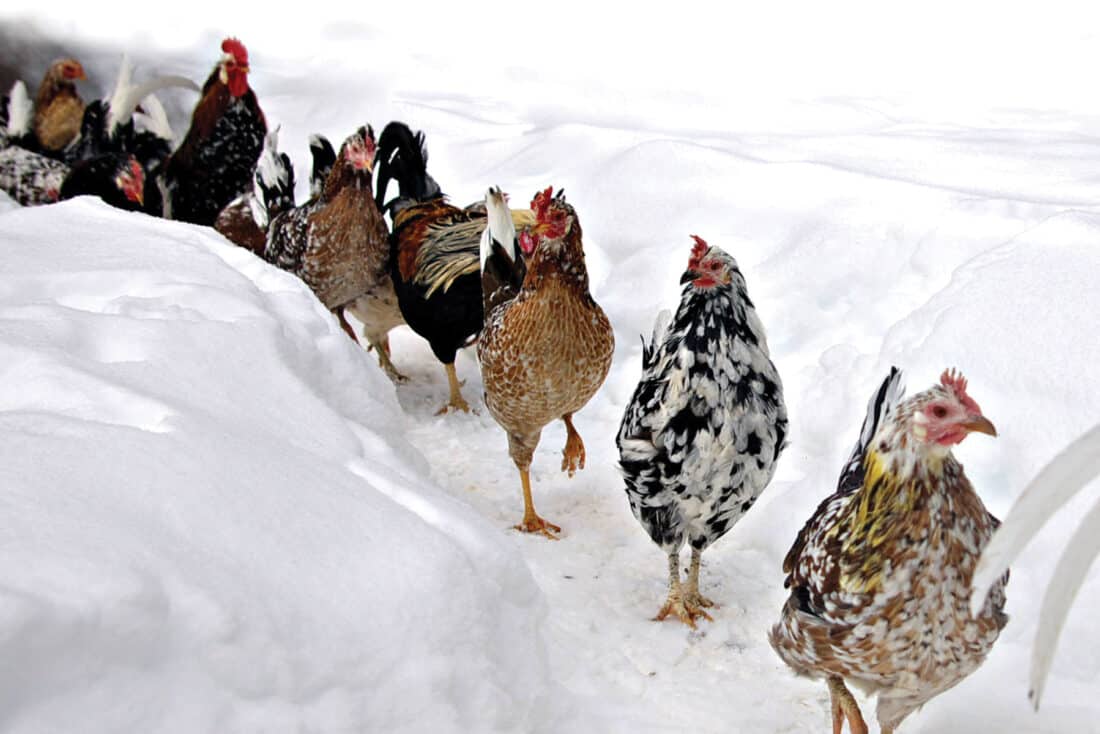
As a landrace that has existed in Iceland since the ninth century when they were taken there by settlers, the Icelandic chicken is a hardy bird that can survive in harsh climates.
They are a relatively small type of chicken, so they don’t make the best table bird – but they do lay a good number of eggs and are known to lay well into their later life as well as continuing to lay well during winter.
They form strong bonds with people they know well and can be friendly and tame when in familiar company.
They are also known to go broody – although this only occurs in some of the hens in any flock rather than all of them.
However, despite their many positive attributes, these birds are considered rare outside of their native Iceland, so if you live anywhere else, they can be quite difficult to acquire.
7. Sussex chickens
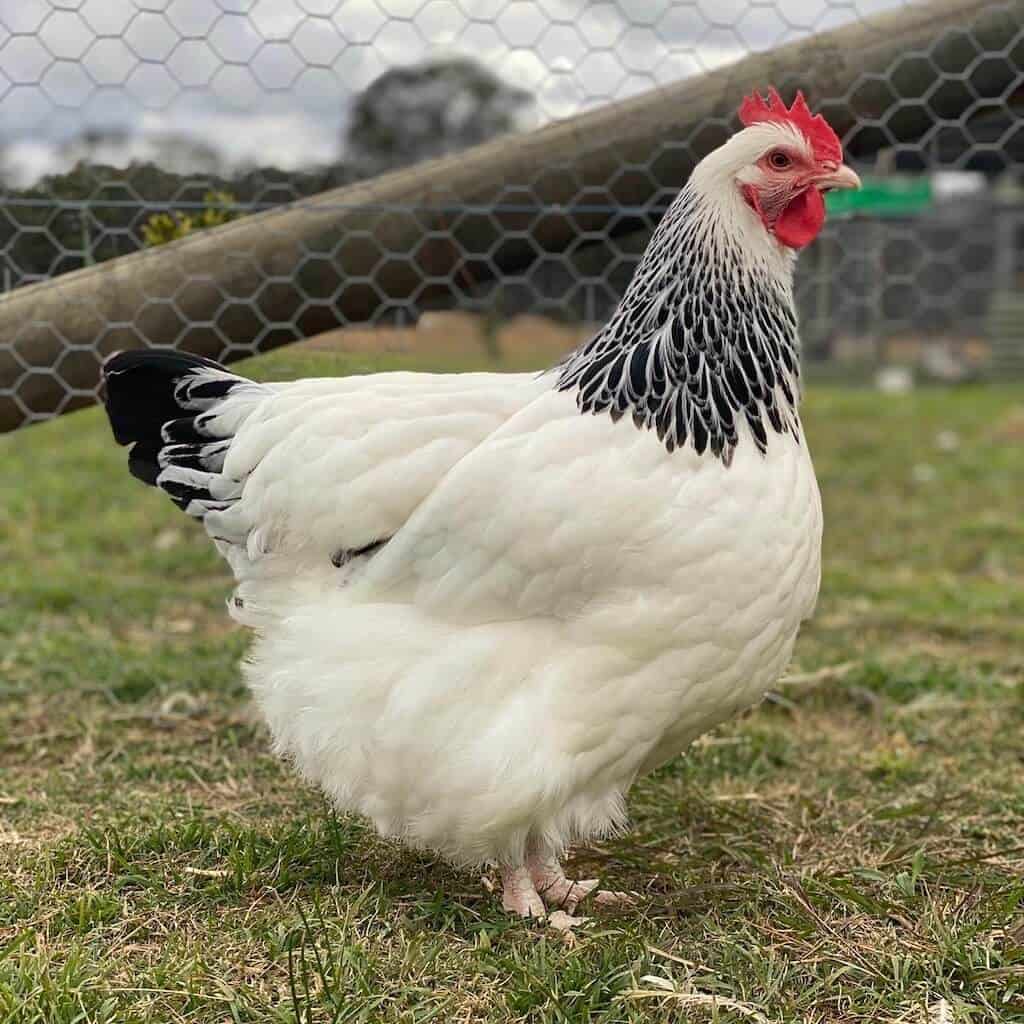
Originally from the English county for which they are named, the Sussex chicken is one of the oldest British breeds. They appeared at the first poultry show at London Zoo in 1845 but had been around far earlier than that.
They are a classic dual-purpose breed, being both large enough to make a good table bird while also laying plenty of eggs, producing 180-200 or sometimes even as many as 250 in a year.
They are docile and friendly, they are resistant to cold temperatures and they are also independent birds that are well adapted to free ranging.
Sussex chickens are known to go broody, so they’re useful if you want a breed that can help you hatch eggs.
They are also excellent mothers, taking good care of their chicks, and for these reasons, they are a popular breed among chicken keepers both in their native England and in the United States.
8. Cubalaya
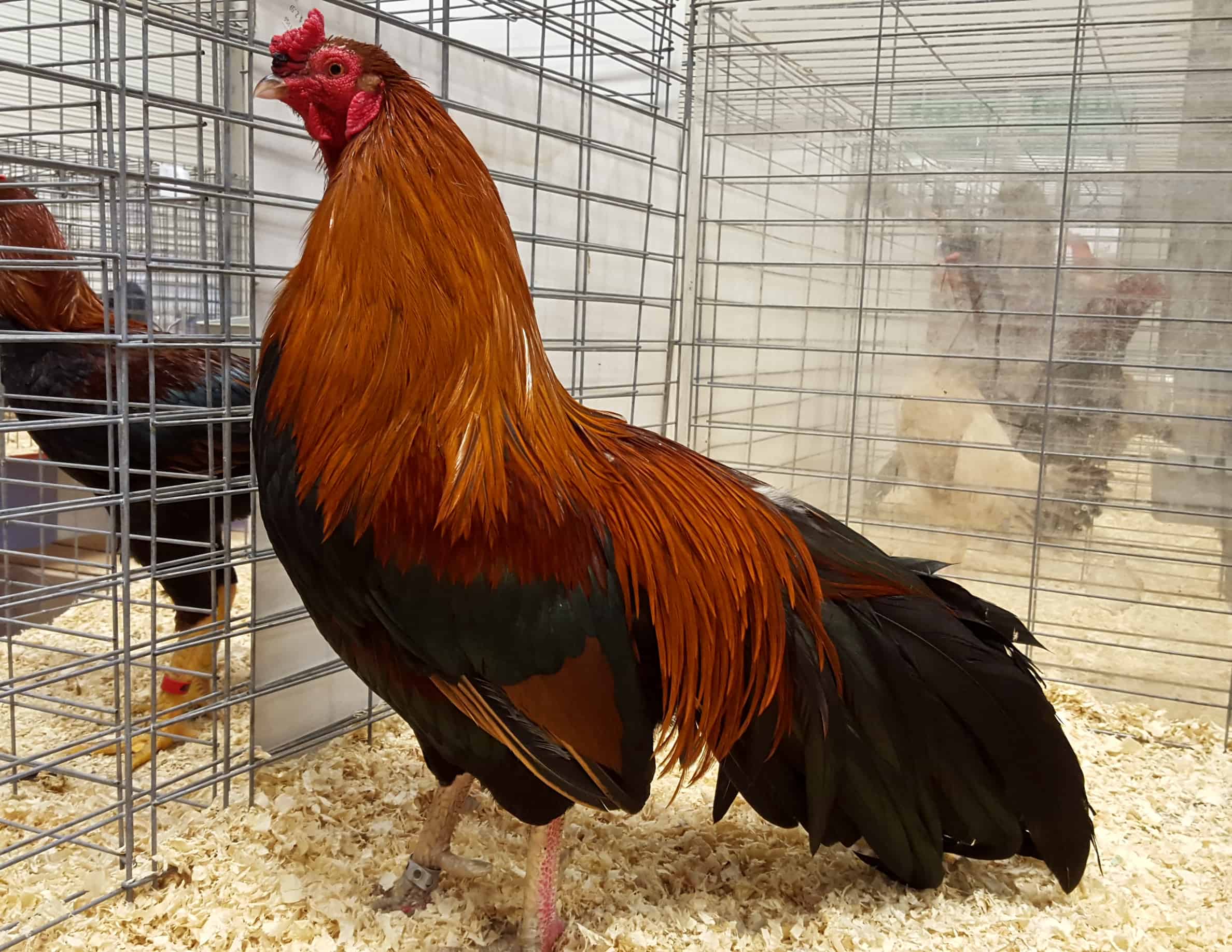
In the 19th century, the Spanish brought chickens to Cuba from the Philippines that were descended from birds of Sumatran and Malayan stock.
These were then refined in Cuba, and a new all-round breed was created that could be used for meat, laying or fighting. The breed was recognized in Cuba in 1935 and given its name in honor of the country.
As befits a bird developed in Cuba, they do well in warmer climates, and they are known to have friendly and curious personalities.
While they make good meat birds or layers – as well as good fighters too – the hens are known to go broody, so adding a few of these Cuban chickens to your flock will help you hatch eggs and look after the resulting chicks.
9. Dorking chickens
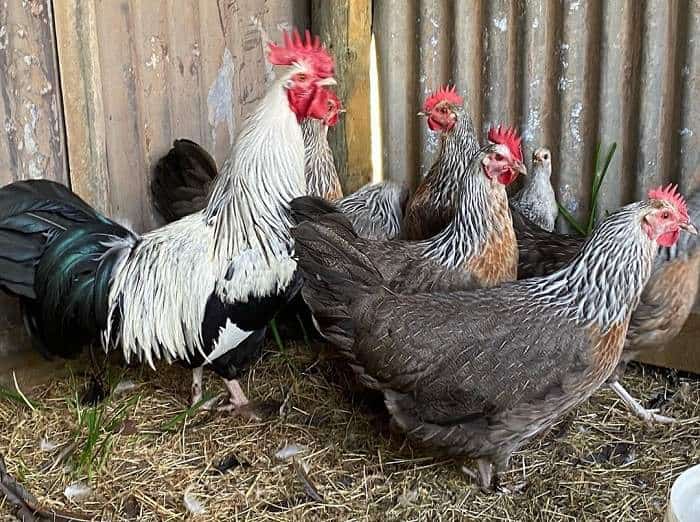
Dorking chickens, like Sussex chickens, are another of the most ancient breeds from England and are thought to trace their roots right back to Roman times.
They are considered a dual-purpose breed and can be kept for both meat and eggs – although they are not as prolific layers as some other breeds, producing only around 150 eggs per year.
They are known to go broody, and Dorking hens make good mothers. However, they only become broody after around two years of age, which is a little later than some other chicken breeds.
Despite this breed’s venerable age, it fell out of favor in the post-War years, and by the 1970s, it was almost extinct.
It has since been brought back from the brink – but it is still considered a rare breed of chicken, even more so in the US than in its native England.
10. Dominique
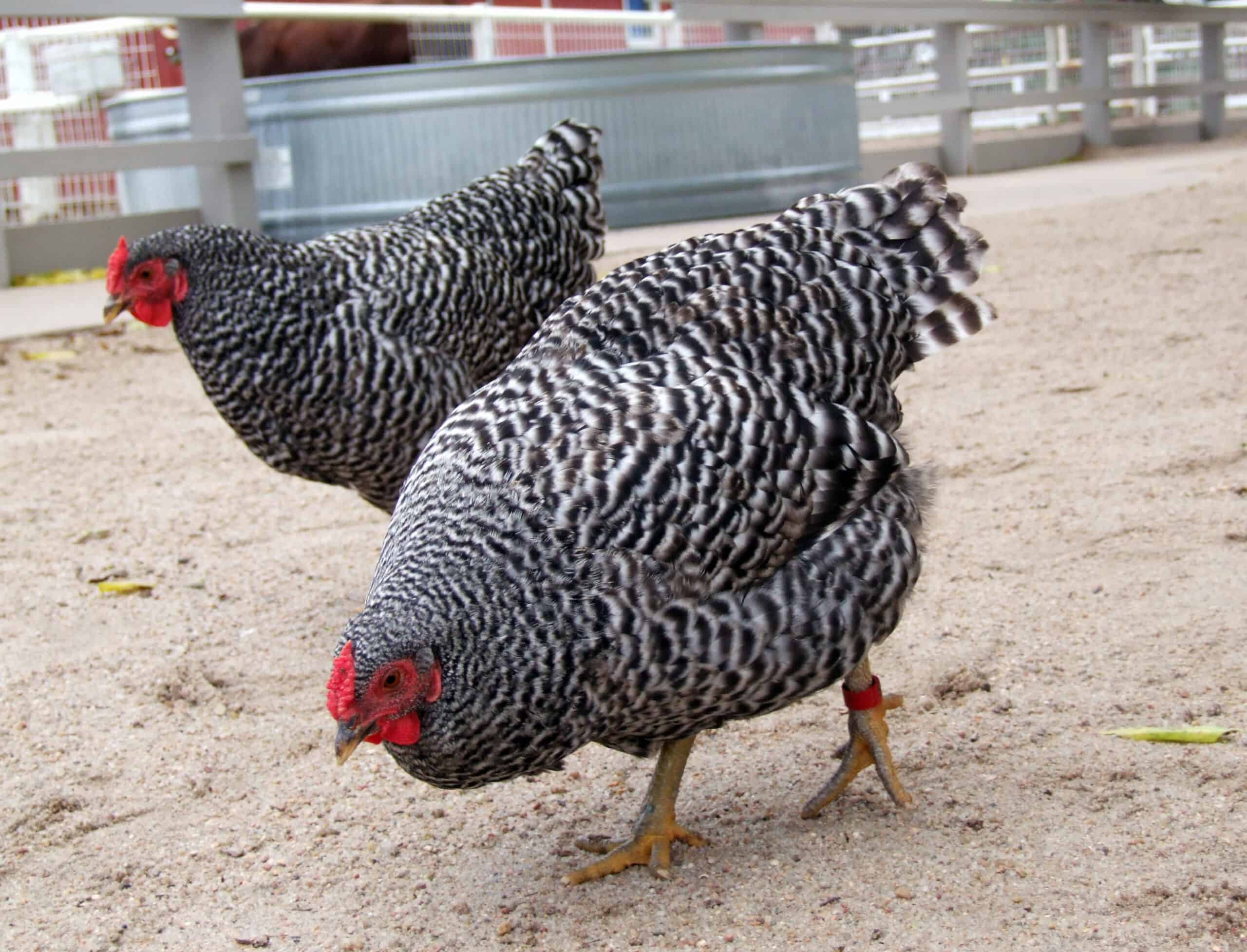
Considered the oldest of the US breeds of chicken, the Dominique probably arrived in North America with settlers from the south of England and is likely to be descended from Sussex chickens, Dorking chickens and other similar stock.
It was already established in America by the mid-18th century, and within another century, it was common across the whole US.
However, it later went into decline, and by the 1970s, the breed had almost been lost.
It has since recovered well and nowadays is much less of a concern.
The breed is easily distinguishable by its black and white barred plumage, its rose comb and its yellow legs.
It is commonly kept as a dual-purpose breed, although it makes a better laying chicken than a table bird. Dominiques are also known as a broody breed, and the hens make good mothers.
Furthermore, they are a cold-resistant breed, making them a good option in places that endure harsher winters.
11. Plymouth rock
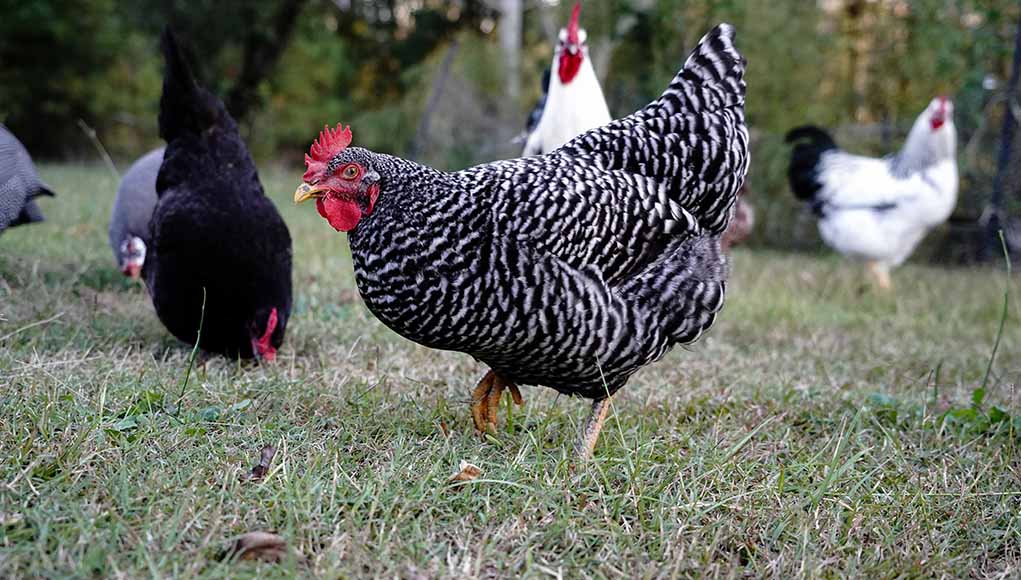
Plymouth rock chickens were created in Massachusetts in the 19th century by crossing breeds including the brahma, the cochin, the Dominique and Java chickens, and like all of these breeds, it retains its tendency to go broody.
This breed makes a good dual-purpose chicken and was especially widespread in the US up until World War II.
After this, its popularity declined with the advent of battery chicken farming, but in recent years has experienced a revival among homesteaders and backyard chicken keepers.
This is largely due to their ability to lay up to around 200 eggs a year as well as their docile and friendly disposition. They enjoy being around people and will actively seek attention, a characteristic that has made them a popular choice of pet too.
Choose a breed according to what you need it for
As we have seen, there are several breeds of chicken that are known to go broody, and if you want hens for hatching chicks as part of a sustainable flock, any of the breeds on our list would be a perfect choice.
However, if you are more interested in collecting eggs for food, broody chickens are less desirable, in which case the breeds on our list are probably best avoided.

